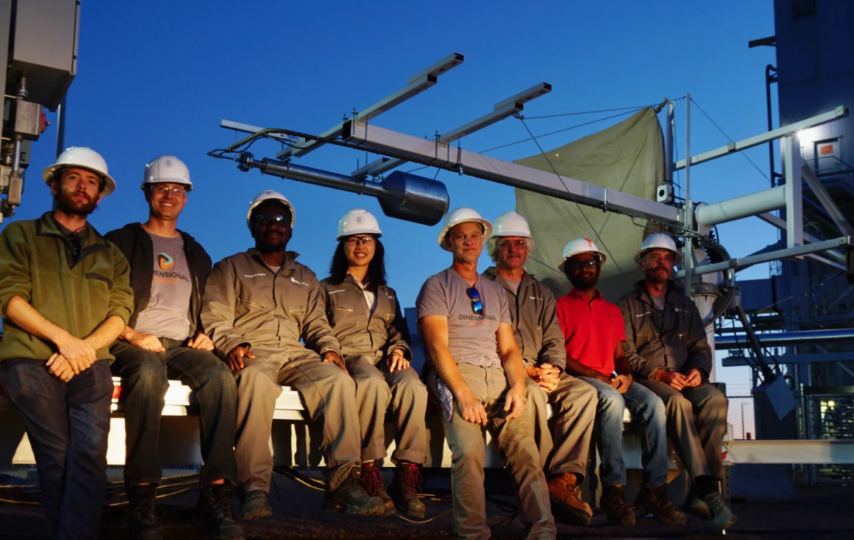CREW Carbon is an innovative company that focuses on climate solutions. Specifically, it specializes in Enhanced Weathering (ERW) technology, which is crucial in removing carbon dioxide (CO2) from the atmosphere. By enhancing natural weathering processes, CREW Carbon addresses the climate crisis.
Working at CREW Carbon means you can help the environment by reducing CO2 and fighting climate change. It’s a place to work on new and cool climate technologies. You’ll be part of a team that cares about nature and sustainability. Plus, you can learn and grow in your career while making a real difference. This write-up will explore the Leadership, Executive, and Engineering openings at CREW Carbon.
- Carbon Removal Engineer/Scientist
Key Responsibilities:
- Assist in designing and conducting laboratory and field experiments to assess changes in reactants’ physical and chemical properties.
- Perform field and laboratory operations, including sample collection, analysis, and interpretation.
- Take the lead in testing and resolving reactor and sensor array systems issues.
- Drive innovative ideas through various research stages, from conceptualization to proof-of-concept and scaling up.
- Prepare and assess technical plans, reports, presentations, and proposals to support new and ongoing projects.
- Effectively discuss with the R&D team and share ideas and results regularly.
Requirements:
- Bachelor’s degree in a relevant engineering or scientific discipline (e.g., chemical engineering, environmental engineering, chemistry, geochemistry, etc.).
- A minimum of 2 years of relevant project or laboratory experience.
- Over 2 years of field experience deploying technology at pilot or commercial scales.
- Proficiency in modelling software for reactive transport or geochemical modelling (e.g., Python, MATLAB, COMSOL, Geochemist’s Workbench, PHREEQC, etc.).
- Project Lead Engineer
Responsibilities
- You’ll lead their technology’s planning, setup, and use during testing and real projects.
- You’ll work with other companies and partners to ensure our projects go smoothly.
- You’ll keep track of their project schedule to ensure we reach our carbon removal goals.
- You’ll ensure they have good procedures and data to show that our projects work.
Requirements
- Should be a Licensed Professional Engineer in the United States.
- Should have a Master’s degree in engineering or a similar field.
- Proficiency in performing techno-economic analysis (TEA) and life cycle analysis (LCA)
- Expertise in reactive transport modelling, including software like PHREEQC or The Geochemist’s Workbench.
- R&D Engineer
Responsibilities
- Assist the CREW Project Lead Engineer in various aspects, especially designing and executing the pilot project.
- Collaborate with project partners.
- Contribute to the design and implementation of the reactor system.
- Take the lead in designing, operating, and troubleshooting sensor array systems for the pilot site.
- Ensure compliance with pilot site permit requirements.
- Oversee and support external engineering firms in sensor construction.
- To create essential datasets and contribute to lab initiatives by conducting bench-top experiments with mineral feedstocks.
Requirements
- Bachelor’s degree in a relevant scientific or engineering field.
- A minimum of 2 years of work experience.
- Proficiency in analytical software, particularly Excel.
- Advanced degree in a science-related field.
- Mechanical Engineer
Responsibilities
- Build and test multiphase reactor systems with internal and external engineering teams.
- Generate computer-assisted design (CAD) schematics and drawings.
- Conduct hands-on experiments using prototype systems, validate process simulation models, and oversee improvements to physical system components.
- Operate various machinery and laboratory equipment for system component construction and operation.
- Test reaction vessels, piping systems, pumps, valves, filtration, and sampling systems.
- Assist in process development and creating PFDs (Process Flow Diagrams), P&IDs (Piping and Instrumentation Diagrams), and Material Balance Diagrams.
- Develop and maintain bills of materials and standard operating procedures.
- Evaluate construction materials for system components exposed to corrosive, hazardous liquids, solids, and pressurised gases (1-10 bar).
- Collaborate with external suppliers and manufacturers.
Requirements
- Bachelor’s degree in Mechanical, Environmental, or Process Engineering.
- 2-4+ years of engineering or early-stage technology work experience.
- Proficiency in CAD software such as AutoCAD, Solidworks, and Autodesk.
- Head of Engineering
Responsibilities
- Supervise designing, constructing, installing, operating, and enhancing large-scale carbon capture reactor systems.
- Collaborate across various scales, from laboratory to deployment, to develop models that guide system design and optimization. Build and test design adjustments.
- Manage the commissioning of field-deployed reactor systems, including coordination with external engineering firms.
- Lead the modeling and design of complex reaction systems involving multiple components, encompassing solid-liquid, gas-liquid, and solid-gas reactions.
- Take charge of process development and equipment sizing.
- Evaluate construction materials for system components that come into contact with corrosive or hazardous substances, including pressurized gases (1-10 bar).
- Engage, supervise, and oversee vendors and manufacturers, including procurement and contract evaluation for services and hardware.
- Collaborate with the science team and engage in technical communications, including creating internal and external presentations and reports.
Requirements
- Bachelor’s or Master’s in Process, Mechanical, Chemical, or Environmental Engineering (or related field).
- 6-8+ years of work experience in engineering or early-stage technologies.
- Strong ability to translate theoretical designs, calculations, and laboratory-scale experimental data into real-world processes and equipment.
Conclusion
In conclusion, it’s important to note that all candidates applying for these positions should be physically fit and capable of lifting up to 15 pounds. Please review the job responsibilities and thoroughly examine the job requirements. Experience a fulfilling work environment while positively impacting the environment at CREW Carbon.








